INTRODUCTION
AI SaaS Product Classification Criteria in today’s digital and upgraded time has become a very important part because without this AI SaaS will not be able to work properly, the reason for this is that AI SaaS solutions are rapidly, meaning at very high speed, growing. Correct investors, classification helps developers and users (involver) a lot in business fit related and in the real value of the product. This is mainly divided into three pillars and depends on them: Number one is market alignment which means whether it solves a real problem, after this on number two is technical capability which means the use of right AI tech like ML, NLP, CV, GenAI, and on number three is scalability potential which means whether it will grow with demand.
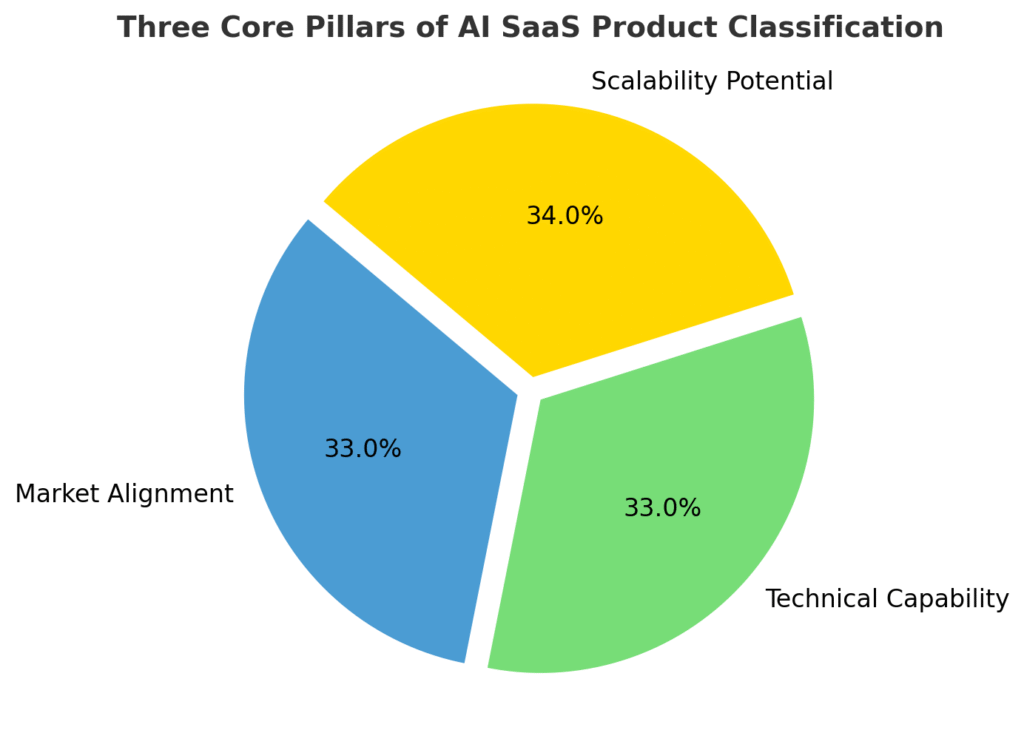
In today’s digital era AI-powered tools are present everywhere and in every place—for example, learning bots for kids’ easy learning, and senior-friendly interactive tools, smart-home assistants, emotional-support companions. In the flood of these options, clear classification ensures the right choice, better ROI, and long-term business impact.
Why Is It Important to Classify Your AI SaaS Product Correctly?
In the new digital time, AI SaaS product classification is not just a formality but essential — it is the decision-making process that determines how you will market your product, meaning how you will rank it up, which users or audience will use it, and what its growth path or procedure will be.

Wrong classification can result in targeting the wrong audience, which predicts loss, or a monetization model mismatch, and investors or customers can become confused and a wrong effect can also occur.
Example: If a tool made to support customers is used as a sales enablement tool, the product market can be delayed. That is why doing this process with proper attention and assumption.
Key Factors in AI SaaS Product Classification
Now when AI has become essential in every field, AI SaaS product classification is a strategic process which is not only limited to the procedure of identifying the product’s features (characteristics), but it also decides whether the product has market fit or not, what the scalability potential is like, and what the adoption rate will be.
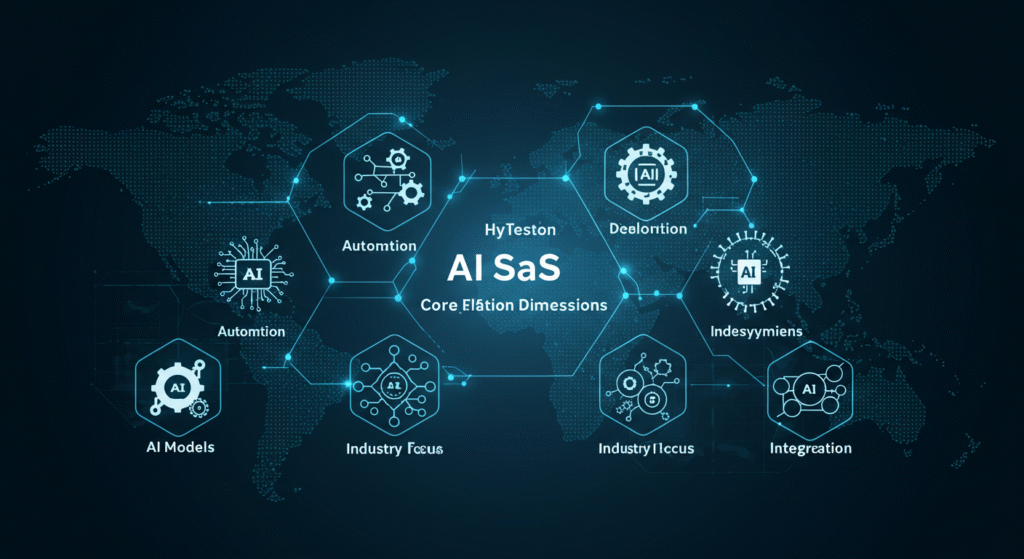
In this, some types of core dimensions are evaluated, such as:
AI Model Type – Models like ML, NLP, CV, GenAI, RL tell what type of data will be processed and in what form the output will be received.
Functional Use Case – The role of the product such as customer support, marketing, operations, finance, or HR, which makes ROI and positioning clear.
Data Requirements & Input Types – Defines the data format (text, audio, video, sensor) and the source (real-time, batch, static).
Automation Level – Fully, semi, or assistive automation tells how much human input is needed.
Deployment Model – Public, private, hybrid, or edge-based system which affects speed, security, and scale.
Industry Focus – Fit for specific industry (vertical) or multi-industry (horizontal) use.
Integration Capabilities – Ability to connect smoothly with CRM, ERP, database, and APIs.
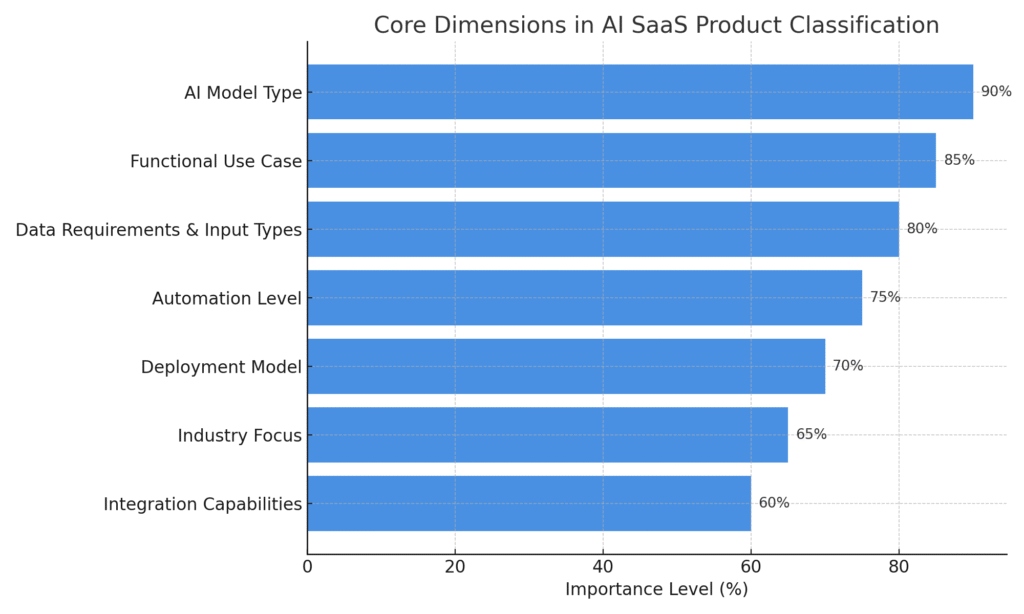
An AI SaaS product is presented in front of the correct audience only when it has proper classification. Only then can businesses clearly define their clear value proposition and create a sustainable advantage in market competition.
How to Evaluate AI SaaS Products Using Classification Criteria
In the advanced time, meaning in the AI era, while evaluating AI SaaS products, do not depend only on surface-level features or characteristics, assess them with clear classification criteria so that no problem is created.
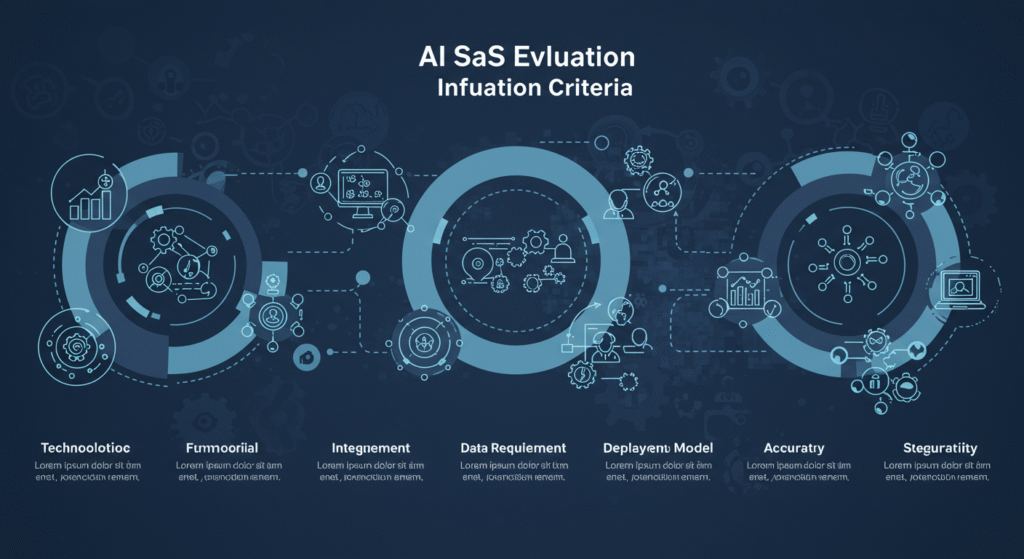
Focus deeply on technological foundation, functional use cases, data requirements, deployment model, and integration flexibility so that the process can be completed easily. Accuracy & performance decide whether the AI is giving reliable or correct results or not, the scalability procedure ensures whether the product will grow with demand or not.
Explainability and transparency are maintained, while a strong security & compliance system protects sensitive data and information. Usability makes product adoption easy, and seamless integration with CRM, ERP, or APIs boosts operations.
Common Mistakes in AI SaaS Product Classification
In the AI SaaS product classification process, a major mistake is focusing only on features and ignoring the main capabilities. Overlooking deployment and integration challenges is also a common issue.
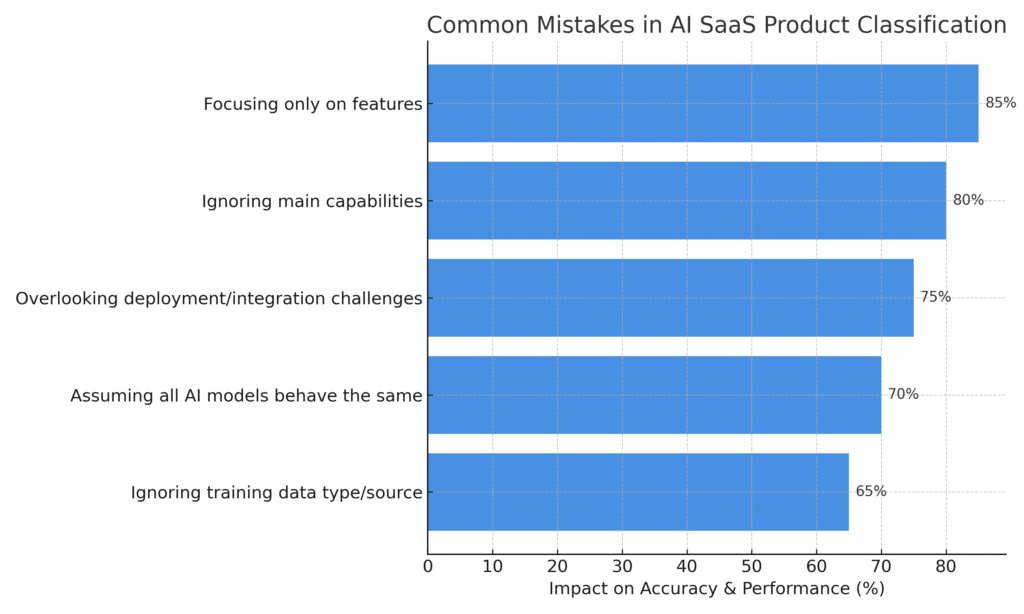
People assume that all AI models behave the same, whereas their strengths and limits are different. Ignoring the importance of the type and source of training data also directly affects accuracy and performance.
Real-World Example of AI SaaS Product Classification
An AI SaaS tool was specifically made only for retail inventory optimization. On the surface, it looked like just a supply chain management tool, but with proper classification, a deeper picture emerged. Model Type: Machine Learning with demand forecasting capabilities. Functional Area: Operations & Logistics.
Data Input: Historical sales data plus real-time POS feeds. Automation Level: Semi-autonomous — automation with human oversight. Delivery Model: Public Cloud for easy scalability. Industry-Specific: Retail sector targeted. Integration: Fully compatible with Shopify and SAP. Such classification makes the product’s use cases, scalability, and market positioning crystal clear.
Conclusion: Leveraging AI SaaS Product Classification Criteria for Better Decisions
Using AI SaaS product classification criteria improves market alignment, technical assessment, and scalability evaluation. This structured approach addresses user needs and ethics, boosting product success and competitive edge.
